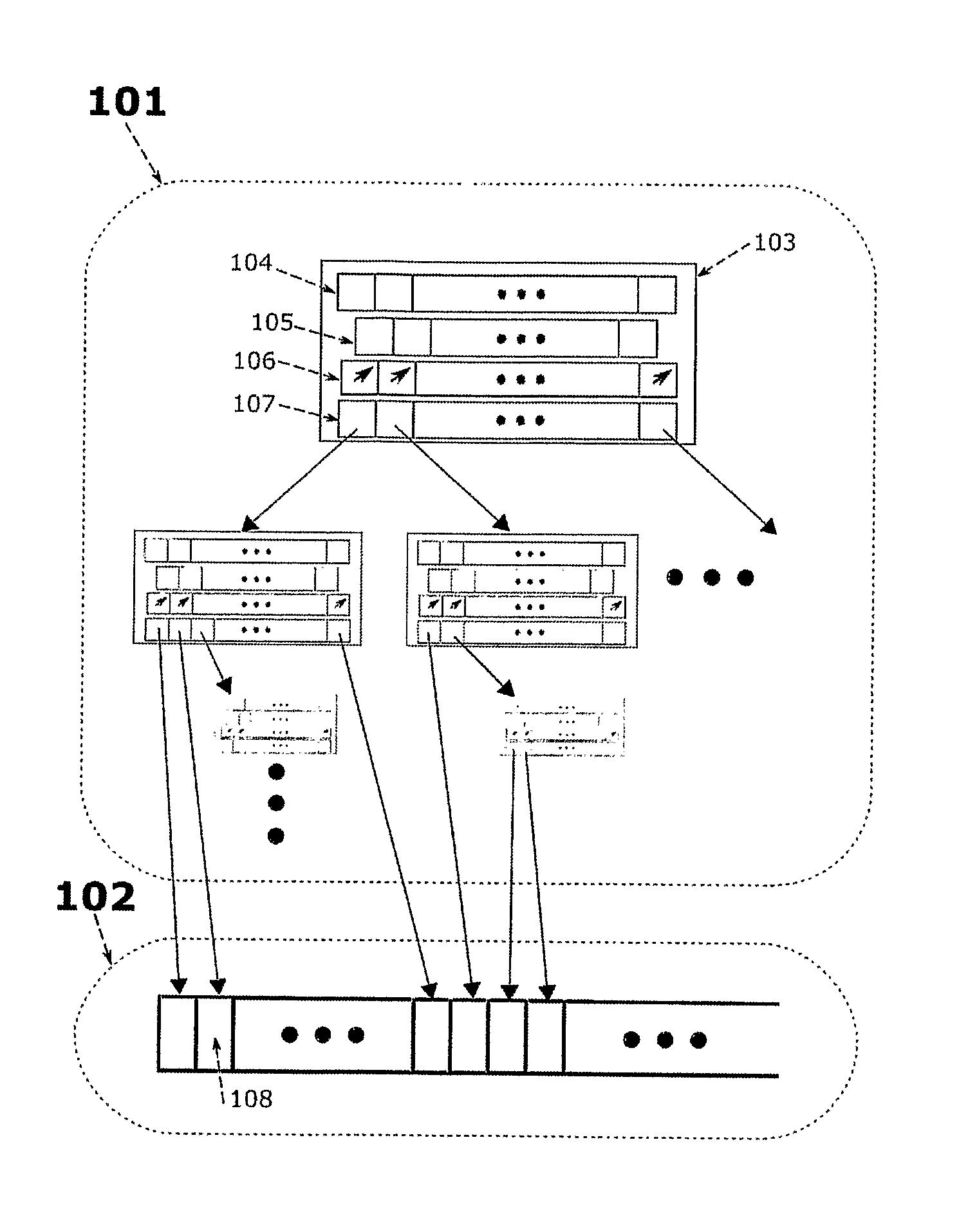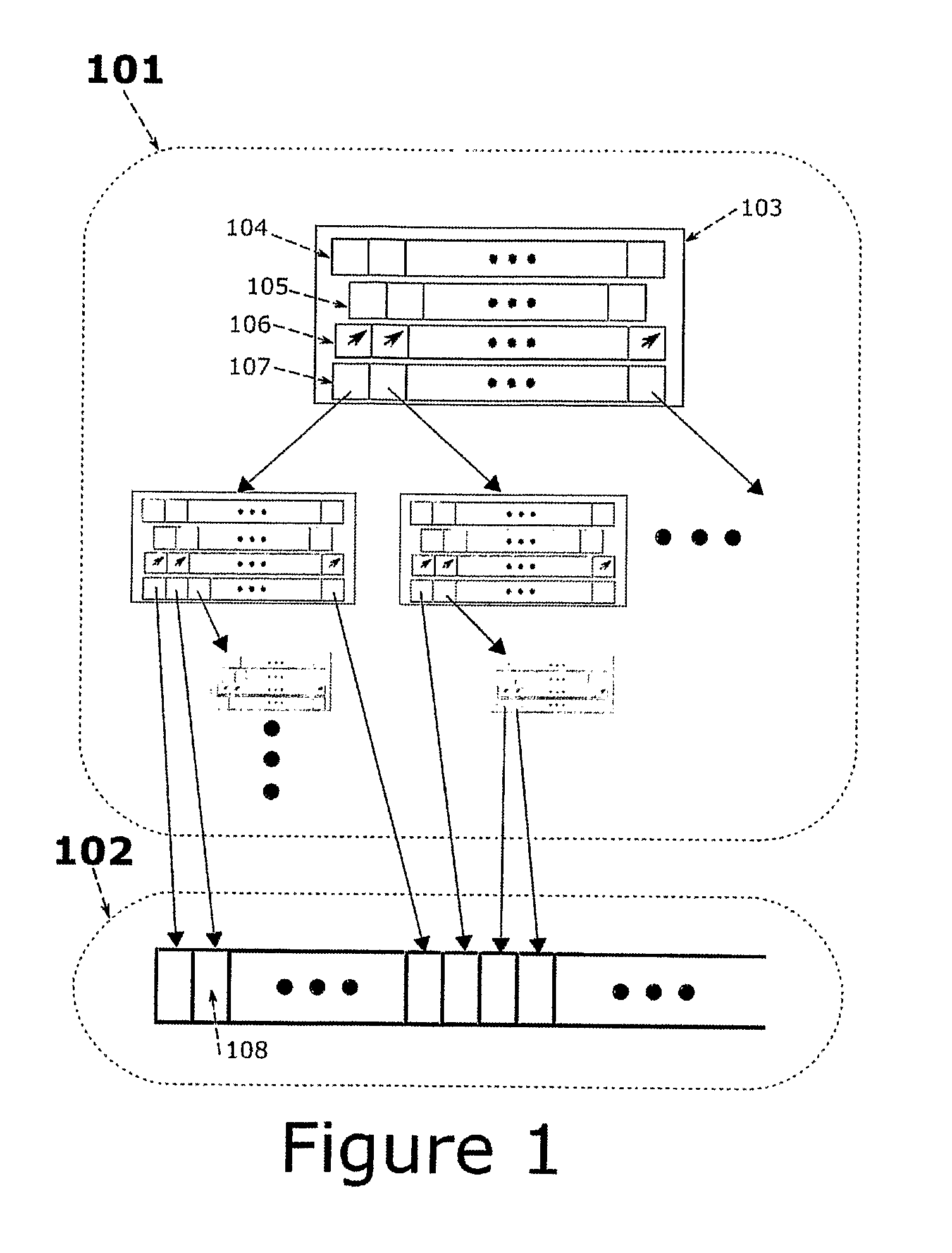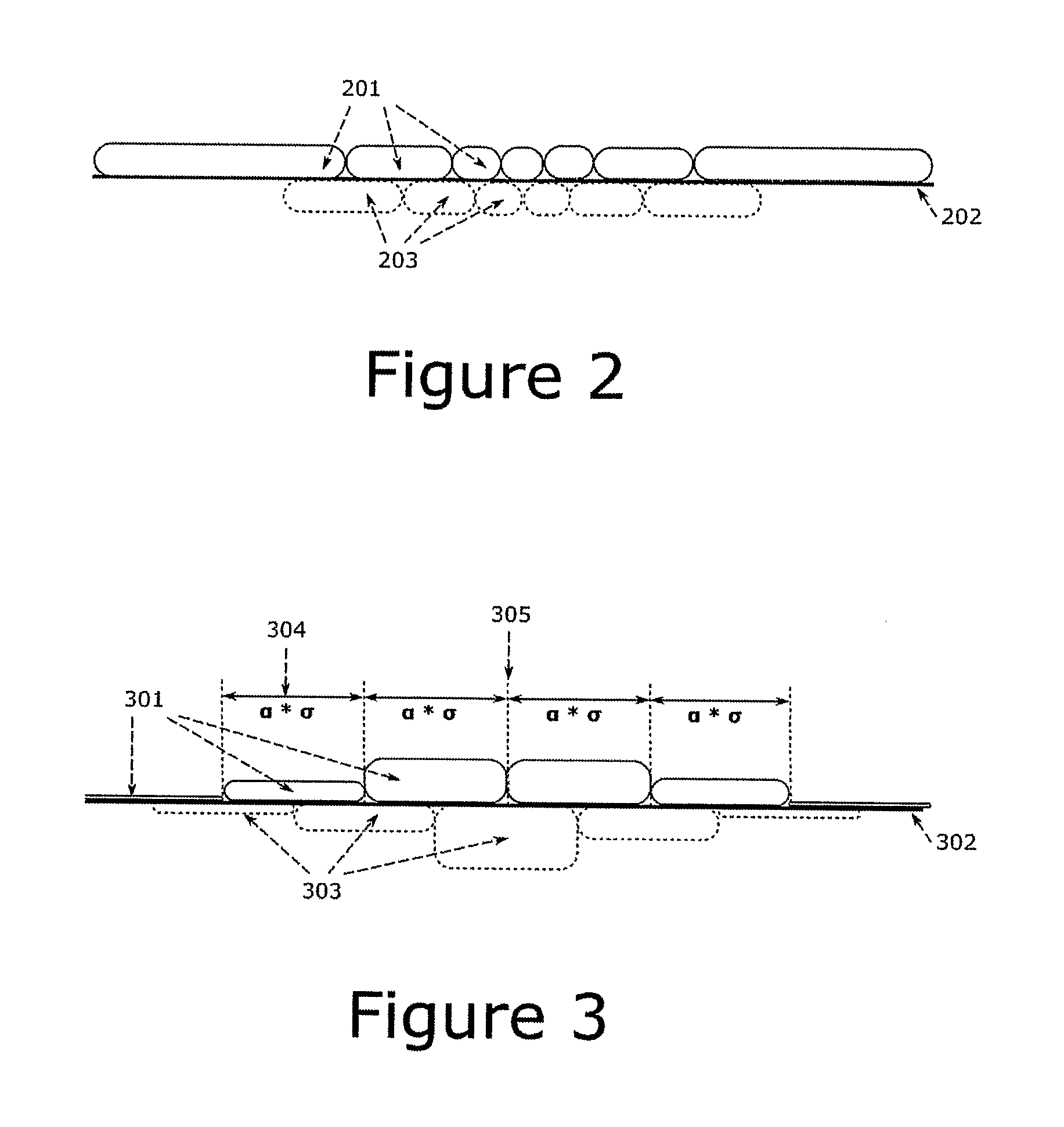Data mining using an index tree created by recursive projection of data points on random lines
a data point and random line technology, applied in the field of data mining using an index tree created by recursive projection of data points on random lines, can solve the problems of limited number of random lines (one line per hierarchy), no of these approaches have been shown to be applicable to large data signature sets, and pvs-index suffers. , to achieve the effect of efficient search
- Summary
- Abstract
- Description
- Claims
- Application Information
AI Technical Summary
Benefits of technology
Problems solved by technology
Method used
Image
Examples
Embodiment Construction
[0031]In the following section the NV data structure, tree creation, insertion, deletion and search is described in a detail. In order to clarify the technical jargon commonly used in the field of the invention a definition of terms is provided.
Definitions Of Terms Used In The Present Context
[0032]Constant Time:[0033]Refers to the time required to retrieve the same amount of data from a data store. Data stores in computers are hierarchically organized (Register-L1 cache-L2 cache-Lcache-main memory-secondary storage) and one access to such a data store takes a specified constant amount of time and retrieves a constant amount of locality close data (bandwidth).[0034]Constant time access to a secondary data store may (in case of a hard disk or an optical disk) have slightly different access time depending on where the data is located, still it is regarded as constant access time in the present context.
[0035]NV-Tree:[0036]NV-tree refers to the nearest vector tree data structure used in ...
PUM
 Login to View More
Login to View More Abstract
Description
Claims
Application Information
 Login to View More
Login to View More - R&D
- Intellectual Property
- Life Sciences
- Materials
- Tech Scout
- Unparalleled Data Quality
- Higher Quality Content
- 60% Fewer Hallucinations
Browse by: Latest US Patents, China's latest patents, Technical Efficacy Thesaurus, Application Domain, Technology Topic, Popular Technical Reports.
© 2025 PatSnap. All rights reserved.Legal|Privacy policy|Modern Slavery Act Transparency Statement|Sitemap|About US| Contact US: help@patsnap.com



